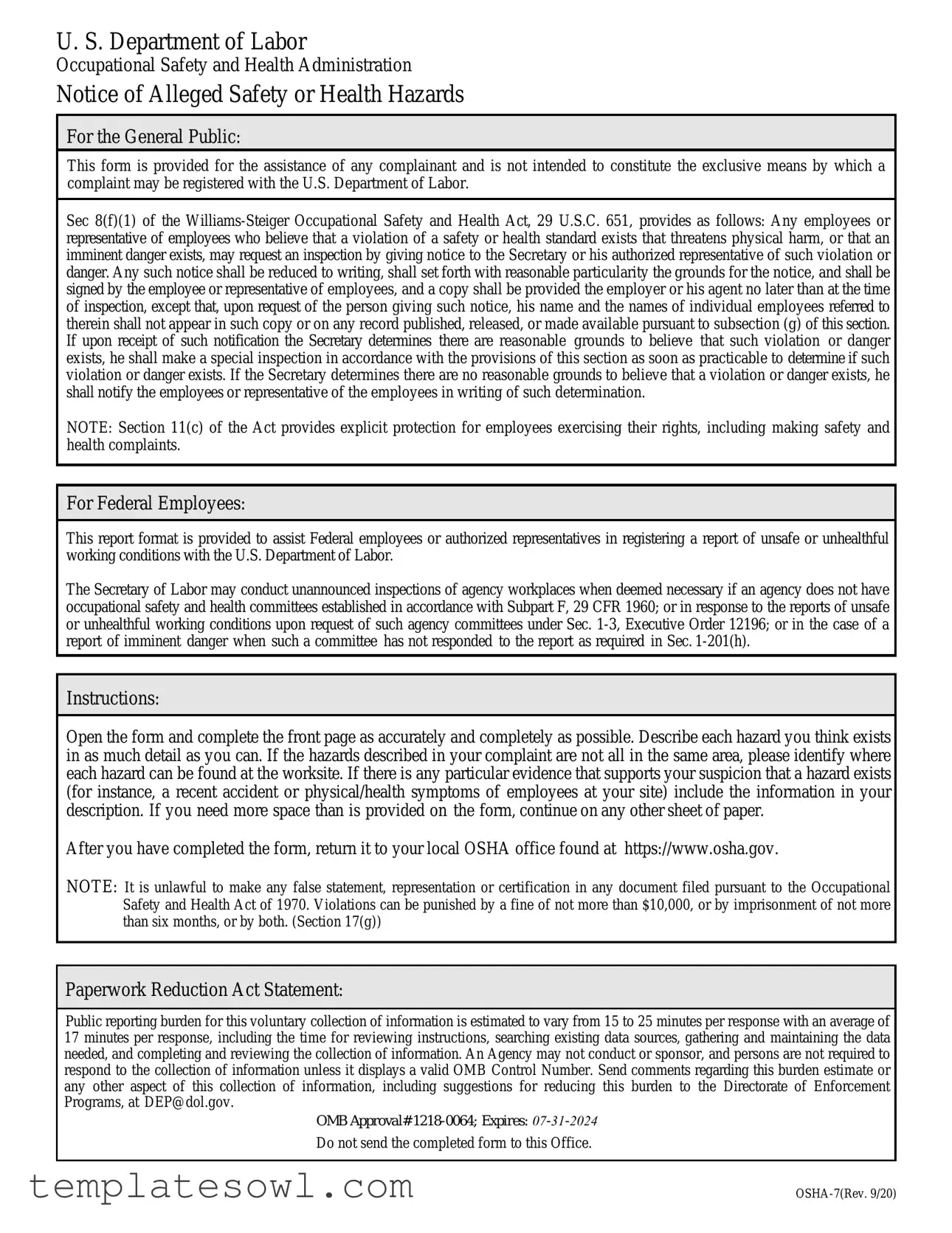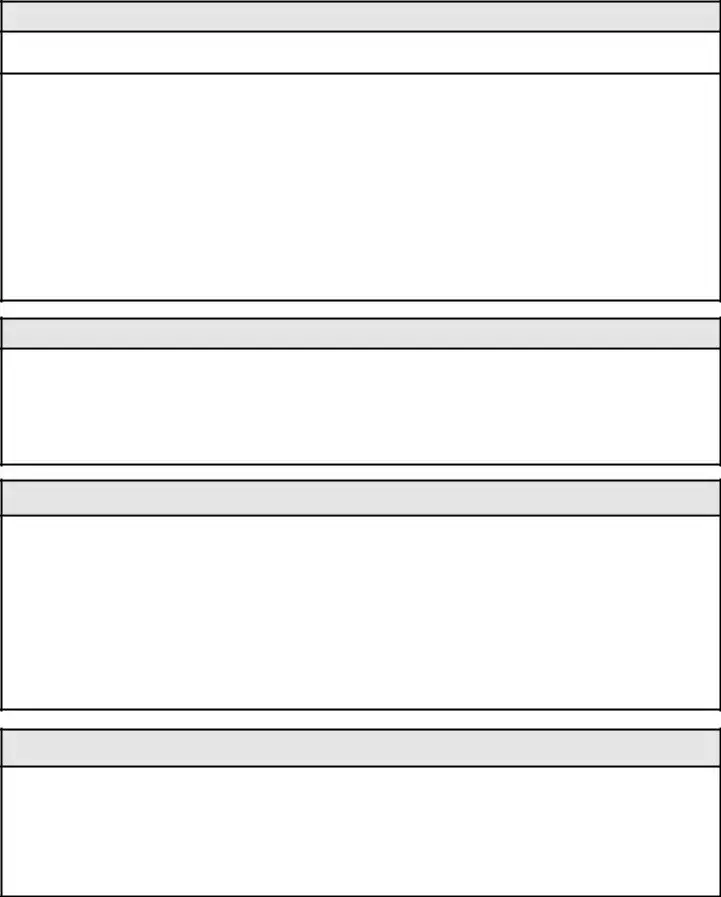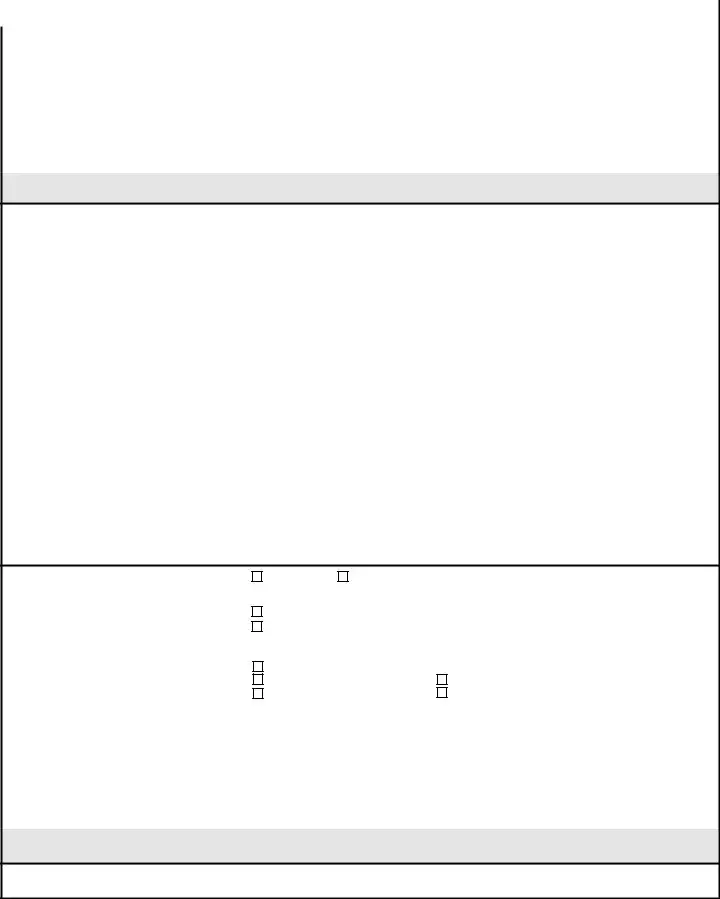U. S. Department of Labor
Occupational Safety and Health Administration
Notice of Alleged Safety or Health Hazards
For the General Public:
This form is provided for the assistance of any complainant and is not intended to constitute the exclusive means by which a complaint may be registered with the U.S. Department of Labor.
Sec 8(f)(1) of the Williams-Steiger Occupational Safety and Health Act, 29 U.S.C. 651, provides as follows: Any employees or representative of employees who believe that a violation of a safety or health standard exists that threatens physical harm, or that an imminent danger exists, may request an inspection by giving notice to the Secretary or his authorized representative of such violation or danger. Any such notice shall be reduced to writing, shall set forth with reasonable particularity the grounds for the notice, and shall be signed by the employee or representative of employees, and a copy shall be provided the employer or his agent no later than at the time of inspection, except that, upon request of the person giving such notice, his name and the names of individual employees referred to therein shall not appear in such copy or on any record published, released, or made available pursuant to subsection (g) of this section. If upon receipt of such notification the Secretary determines there are reasonable grounds to believe that such violation or danger exists, he shall make a special inspection in accordance with the provisions of this section as soon as practicable to determine if such violation or danger exists. If the Secretary determines there are no reasonable grounds to believe that a violation or danger exists, he shall notify the employees or representative of the employees in writing of such determination.
NOTE: Section 11(c) of the Act provides explicit protection for employees exercising their rights, including making safety and health complaints.
For Federal Employees:
This report format is provided to assist Federal employees or authorized representatives in registering a report of unsafe or unhealthful working conditions with the U.S. Department of Labor.
The Secretary of Labor may conduct unannounced inspections of agency workplaces when deemed necessary if an agency does not have occupational safety and health committees established in accordance with Subpart F, 29 CFR 1960; or in response to the reports of unsafe or unhealthful working conditions upon request of such agency committees under Sec. 1-3, Executive Order 12196; or in the case of a report of imminent danger when such a committee has not responded to the report as required in Sec. 1-201(h).
Instructions:
Open the form and complete the front page as accurately and completely as possible. Describe each hazard you think exists in as much detail as you can. If the hazards described in your complaint are not all in the same area, please identify where each hazard can be found at the worksite. If there is any particular evidence that supports your suspicion that a hazard exists (for instance, a recent accident or physical/health symptoms of employees at your site) include the information in your description. If you need more space than is provided on the form, continue on any other sheet of paper.
After you have completed the form, return it to your local OSHA office found at https://www.osha.gov.
NOTE: It is unlawful to make any false statement, representation or certification in any document filed pursuant to the Occupational Safety and Health Act of 1970. Violations can be punished by a fine of not more than $10,000, or by imprisonment of not more than six months, or by both. (Section 17(g))
Paperwork Reduction Act Statement:
Public reporting burden for this voluntary collection of information is estimated to vary from 15 to 25 minutes per response with an average of 17 minutes per response, including the time for reviewing instructions, searching existing data sources, gathering and maintaining the data needed, and completing and reviewing the collection of information. An Agency may not conduct or sponsor, and persons are not required to respond to the collection of information unless it displays a valid OMB Control Number. Send comments regarding this burden estimate or any other aspect of this collection of information, including suggestions for reducing this burden to the Directorate of Enforcement Programs, at DEP@dol.gov.
OMB Approval# 1218-0064; Expires: 07-31-2024
Do not send the completed form to this Office.


